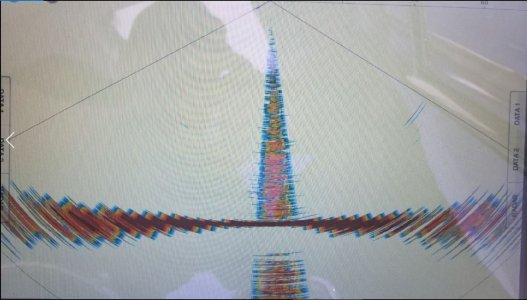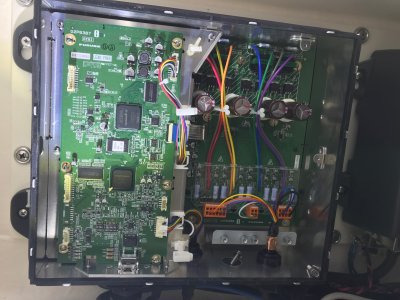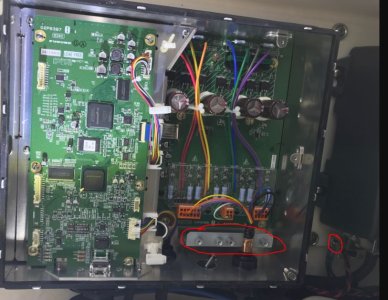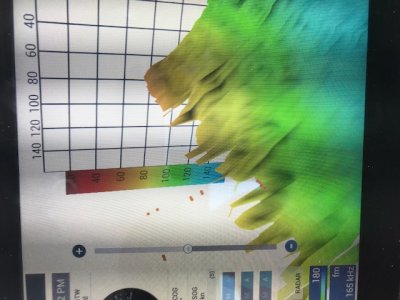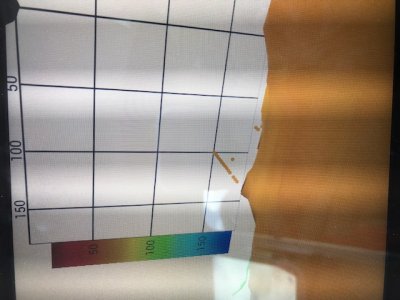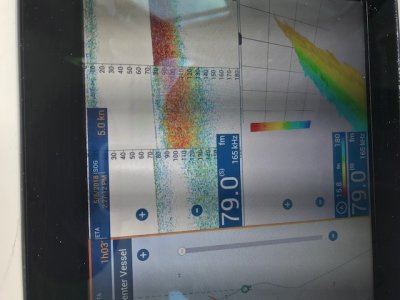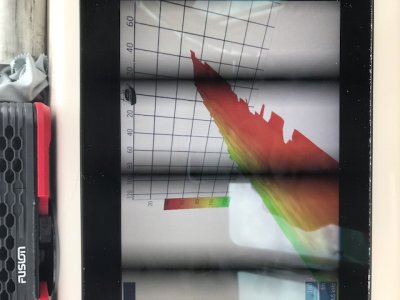Aloha from Hawaii,
Wondering if anyone else is having problems with their DFF3D reading depths greater than 600'. I am a deep drop fisherman and fish ranges from 600-1000'. I was told that it would read as deep as 1200'. I was so ecstatic to purchase the DFF3D with my TZT2 12" MFD with very high hopes. I have used it three times thus far and it works in depths below 300' but when I head to my fishing grounds, it is unable to read the bottom. I have tried the sonar mode, side scan mode, 3d mode and none of them read the bottom at the depths that I fish. I have messed with every conceivable setting on the unit to no avail. Spoke to a Steve (very nice) at technical support who suggested that this might be a problem with grounding wires, but when I inspected the wires, there was nothing wrong with any of the wires. Read the manual inside and out. Ducer is placed in proper position.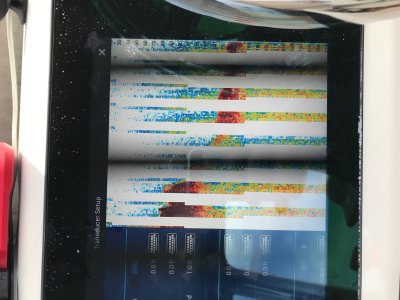
This is what I see at the 600' range.
Frustrated and wondering if I wasted a significant amount of money on a product that so far, has not lived up to the hype, or if there is a fix for this. Any help would be greatly appreciated!
Wondering if anyone else is having problems with their DFF3D reading depths greater than 600'. I am a deep drop fisherman and fish ranges from 600-1000'. I was told that it would read as deep as 1200'. I was so ecstatic to purchase the DFF3D with my TZT2 12" MFD with very high hopes. I have used it three times thus far and it works in depths below 300' but when I head to my fishing grounds, it is unable to read the bottom. I have tried the sonar mode, side scan mode, 3d mode and none of them read the bottom at the depths that I fish. I have messed with every conceivable setting on the unit to no avail. Spoke to a Steve (very nice) at technical support who suggested that this might be a problem with grounding wires, but when I inspected the wires, there was nothing wrong with any of the wires. Read the manual inside and out. Ducer is placed in proper position.

This is what I see at the 600' range.
Frustrated and wondering if I wasted a significant amount of money on a product that so far, has not lived up to the hype, or if there is a fix for this. Any help would be greatly appreciated!


